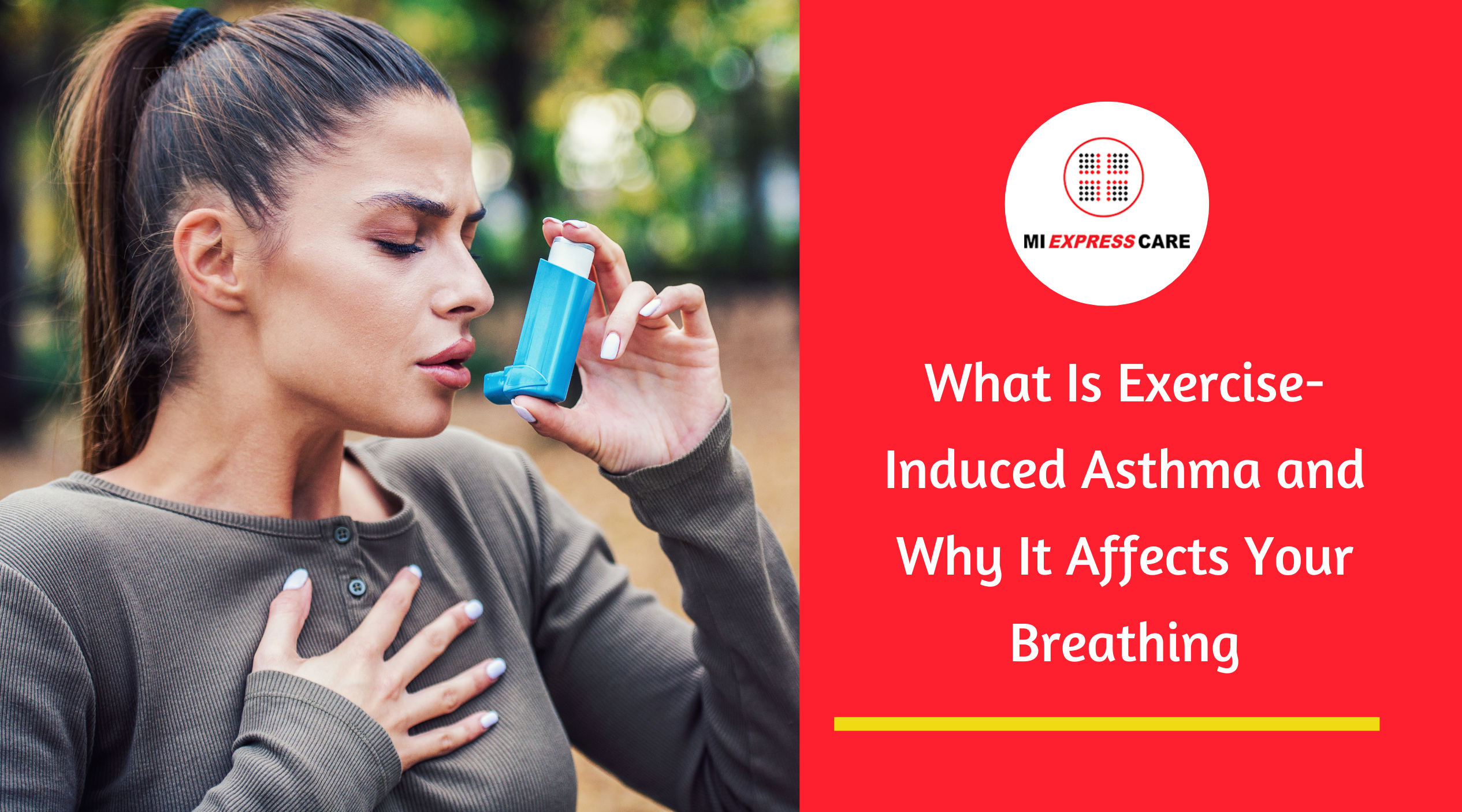


Exercise-induced asthma (EIA) is a common yet often overlooked condition that affects many people, from athletes to occasional exercisers. It occurs when the airways tighten during or after physical activity, making breathing harder. Symptoms like shortness of breath, wheezing, and chest tightness are signs of EIA, but they’re often mistaken for being out of shape. Recognizing these signs and understanding the triggers can help you manage the condition and keep your workouts on track.
Let’s understand what causes it and how to take control of your breathing.
Exercise-induced asthma occurs when your airways narrow during or after physical activity, making it difficult to breathe. Unlike chronic asthma, which affects breathing regularly, EIA is triggered by exercise and tends to occur only during or after physical exertion. While chronic asthma requires ongoing management, EIA can often be managed with specific strategies during exercise.
It's important to note that even healthy, athletic individuals can experience EIA. It's not just a condition for the out-of-shape, it can affect anyone, regardless of fitness level
When you exercise, your breathing becomes faster and deeper, often shifting from nose-breathing (which warms and humidifies air) to mouth-breathing (which delivers colder, drier air directly to the lungs). This rapid dry or cold air intake irritates the airways, causing them to swell and tighten.
Triggers that can worsen symptoms include:
Cold or dry weather
High pollen or allergen levels
Air pollution
Intense workouts without warming up properly
The more intense the exercise, the greater the demand for oxygen, but if your airways constrict, you may feel like you’re suffocating even after stopping.
Exercise shouldn’t leave you gasping for air, but if you experience certain symptoms, you might be dealing with exercise-induced asthma (EIA). Keep an eye out for these telltale signs:
Shortness of breath: Struggling to catch your breath during or after exercise.
Wheezing: A high-pitched whistle when you breathe, especially after exertion.
Chest tightness: A sensation of pressure or discomfort in your chest.
Coughing: Persistent coughing that starts once you finish your workout.
Fatigue or slower recovery: Bouncing back after a workout takes longer than usual.
Noticing these signs early can help you better manage EIA and continue working out without worry.
Feeling winded after a tough workout is normal, but when breathing issues persist or worsen, it's time to get checked out. Signs to watch out for:
Breathing problems that linger well after exercise
Trouble keeping up with your usual workouts
Symptoms getting worse over time
A doctor can help confirm whether asthma triggered by exercise is the cause and recommend the right treatment. Often, a simple inhaler used before workouts can make a big difference.
Breathing Problems during or after a workout aren’t something you should ignore, especially if they keep happening. While it might seem like your fitness is to blame, it could be exercise-induced asthma, and that's something you can treat. Knowing what to look for and when to ask for help can make all the difference.
When EIA is managed properly, your workouts can become smoother, more enjoyable, and even more effective. Don’t let your lungs hold you back from hitting your goals.
Noticing signs like wheezing after exercise or lingering shortness of breath after exercise? You don't have to power through it. Our MI Express Primary Care team is ready to help you figure out what's going on and get you feeling better quickly.
Walk in today or schedule an appointment to breathe easier and stay active on your terms.